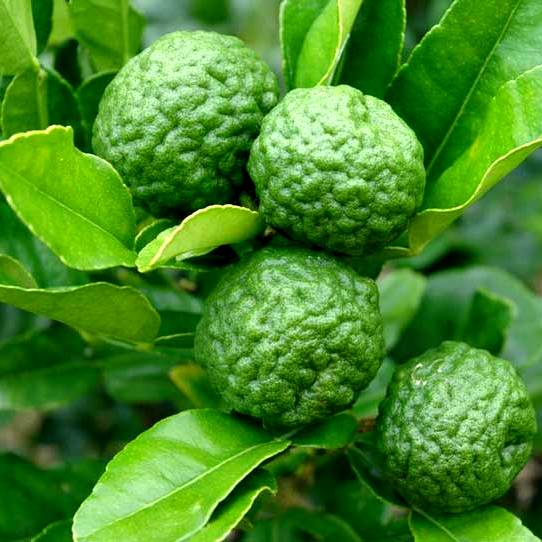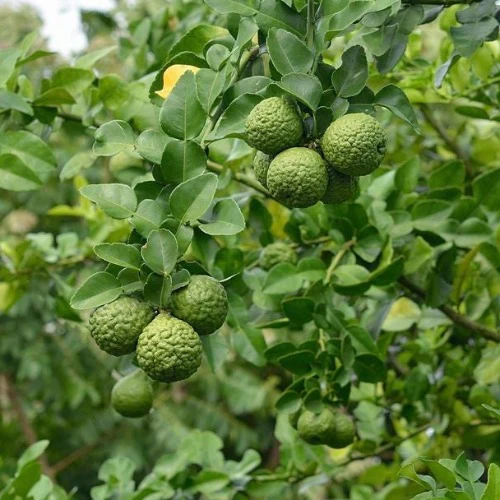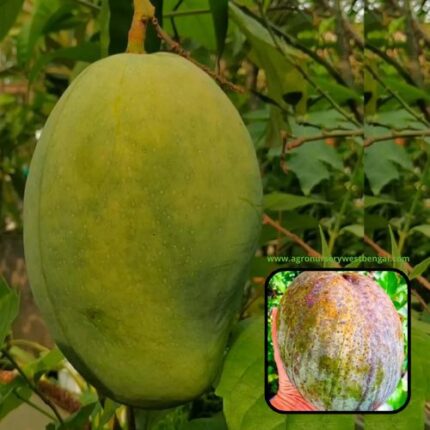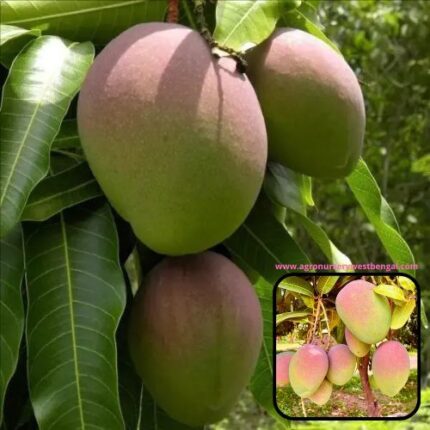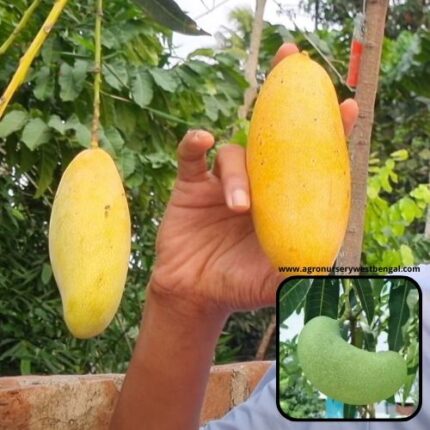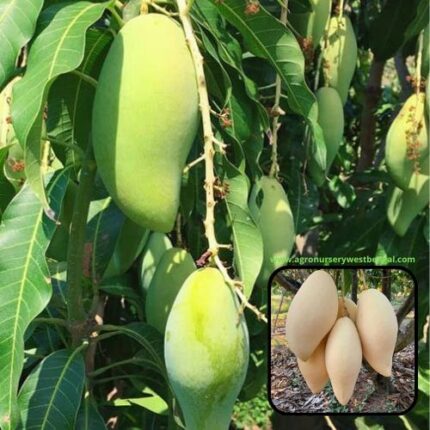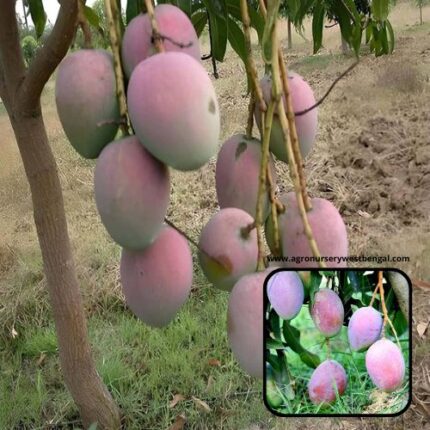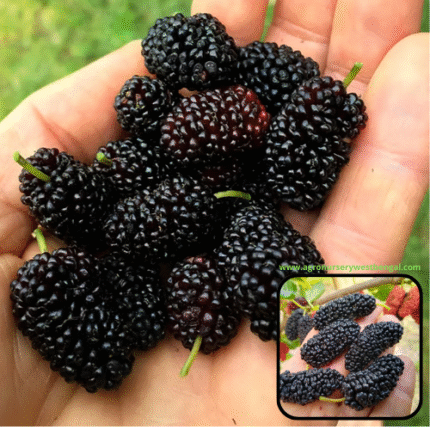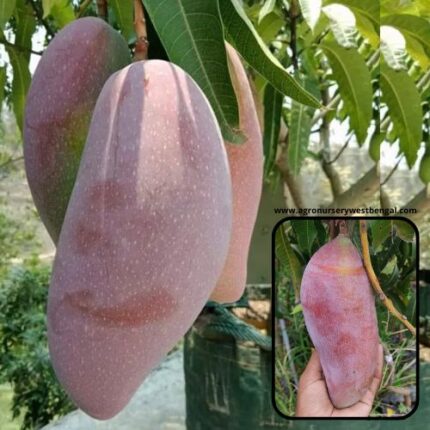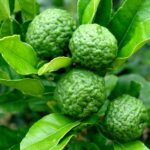
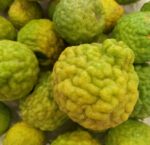
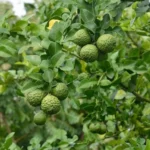
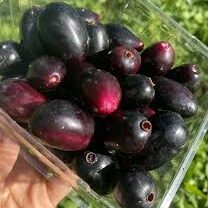
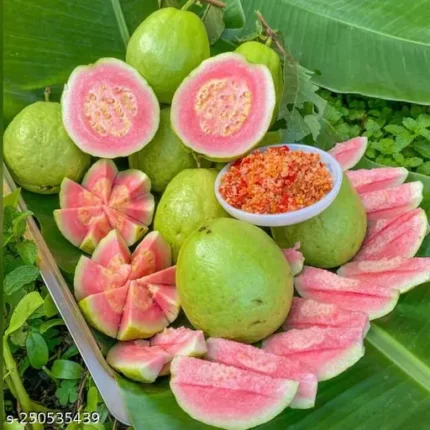
kaffir-lime fruit plants
₹999 Original price was: ₹999.₹599Current price is: ₹599.
“Kaffir lime” (more appropriately known as Makrut lime or Thai lime to avoid a potentially offensive term in some contexts) is a distinctive citrus fruit, Citrus hystrix. While the fruit itself is used, it’s the leaves and the rind/zest that are most highly valued for their intense aroma and flavor in Southeast Asian cuisine, particularly Thai and Cambodian.
Here’s a detailed description of the Makrut lime fruit:
1. Botanical Classification:
- Scientific Name: Citrus hystrix
- Family: Rutaceae (Citrus family).
2. The Plant (Tree/Shrub):
- Appearance: The Makrut lime plant is a small, thorny evergreen shrub or small tree. It has a somewhat crooked trunk and dense, spiny branches.
- Distinctive Leaves: The most famous part of the plant are its unique “double leaves” or “hourglass-shaped” leaves. This is because the petiole (leaf stalk) is broadly winged, making it look like two leaves joined together. These leaves are glossy, dark green, and incredibly aromatic.
- Flowers: Small, white, and fragrant, typically appearing in clusters.
3. The Fruit:
- Appearance:
- Shape: Small to medium-sized, typically round to oval or slightly pyriform (pear-shaped). It’s generally smaller than a common lime, usually around 4-5 cm (1.5-2 inches) in diameter.
- Skin (Rind): This is its most striking feature. The skin is thick, knobby, bumpy, and intensely wrinkled or warty. It’s usually a dark green color when young and turns yellowish-green or yellow when fully mature.
- Flesh (Pulp): The internal flesh is typically pale green or yellowish-green, very firm, and has very little juice compared to other limes.
- Seeds: Contains numerous, relatively large seeds.
- Taste and Flavor Profile:
- Juice: The juice of the Makrut lime fruit is extremely sour, acidic, and quite bitter. It’s generally considered too tart and bitter to be consumed directly or in large quantities.
- Rind/Zest: This is where the fruit truly shines for culinary use. The rind (zest) possesses an intensely aromatic and complex citrus fragrance, often described as a blend of lime, lemongrass, and subtle floral or pine notes. It has a powerful, sharp, and tangy flavor.
- Aroma: The entire fruit, especially its rind, emits an incredibly strong, fresh, and distinctive citrus-herbal aroma. This powerful scent is a key reason for its culinary value.
4. Ripeness:
- The fruit is ready when it reaches a consistent deep green, and will turn yellowish as it fully matures. It remains firm.
5. Culinary Uses: While the leaves are more commonly used, the fruit’s rind is also vital:
- Leaves: The “double leaves” are the most frequently used part, fresh, dried, or frozen. They are a staple in Thai, Cambodian, Laotian, and Indonesian cuisines.
- Used whole in soups (like Tom Yum and Tom Kha Gai), curries, and broths, usually added for flavor infusion and then removed before serving as they are tough to chew.
- Finely shredded or pounded into curry pastes (e.g., Thai green curry, red curry) or chili pastes (like krueng in Cambodia).
- Used to add fragrance to chicken and fish dishes.
- Rind/Zest: The zest of the fruit is crucial for its intense aroma and flavor.
- Pounded into curry pastes (especially in Thai and Laotian cuisine) to add an aromatic, astringent, and tangy note.
- Used in marinades.
- In some regions like Réunion Island, the zest (called combava) is used to infuse rums and rougails (chutneys).
- In Cambodia, the entire fruit can be crystallized/candied.
- Juice: Less commonly used due to its extreme tartness and bitterness, but occasionally used in small amounts to add a “sour punch” to sauces or dressings. It’s often diluted.
6. Other Uses & Benefits: Beyond culinary applications, Makrut lime has traditional and practical uses:
- Aromatherapy: The essential oil extracted from the fruit (especially the rind) and leaves is highly valued in aromatherapy for its uplifting, invigorating, and calming scent.
- Traditional Medicine: Used in traditional medicine for its purported antioxidant, digestive, anti-inflammatory, antibacterial, and insect-repellent properties. It’s used for muscle aches, joint pain, digestive issues, and to support the immune system.
- Personal Care: The juice and rind are traditionally used in shampoos and hair rinses to promote hair health, cleanse the scalp, and even help with lice. Its exfoliating and purifying properties make it popular in skin care.
- Natural Insect Repellent: Compounds like citronellal and limonene in the fruit and leaves make it an effective natural insect repellent.
Important Note on Terminology: The term “kaffir lime” is used by many, but it’s increasingly recognized that the word “kaffir” has derogatory connotations in certain cultures (particularly in South Africa). For this reason, many prefer to use alternative names like Makrut lime or Thai lime.
In summary, the Makrut lime fruit is distinctive for its small size, incredibly bumpy and warty green-to-yellow skin, and minimal, very sour juice. However, its rind (zest) and the plant’s leaves are highly prized for their incredibly potent, complex, and aromatic citrus-herbal fragrance, making them indispensable ingredients in Southeast Asian cuisine and aromatherapy

